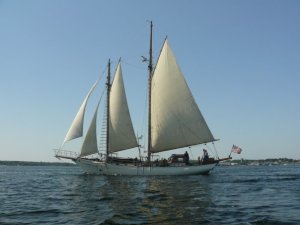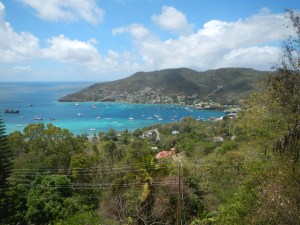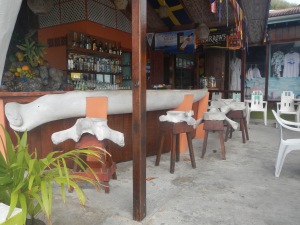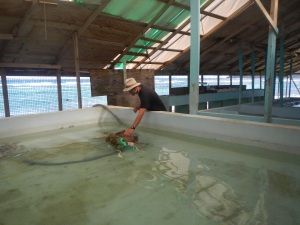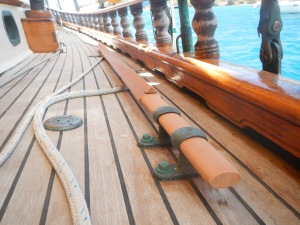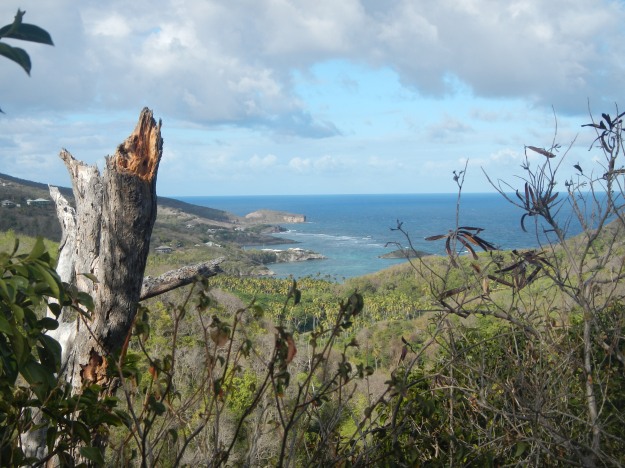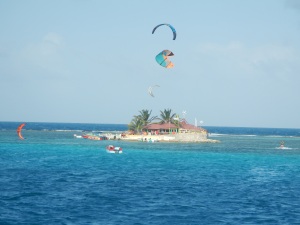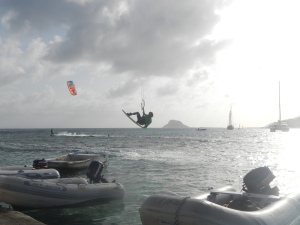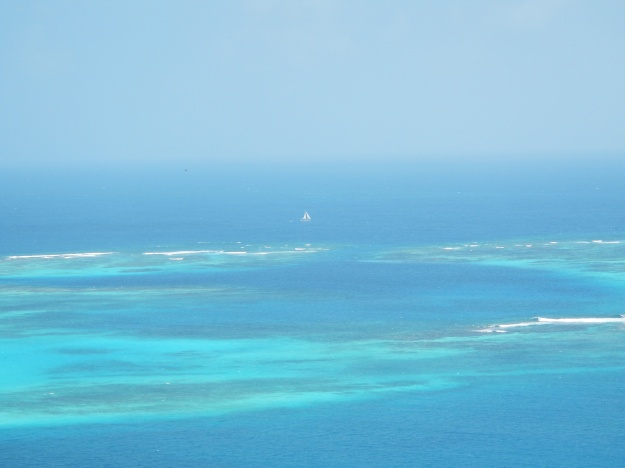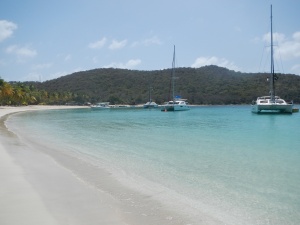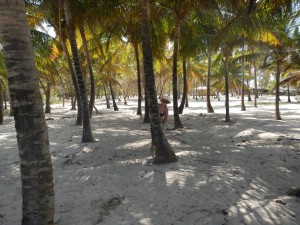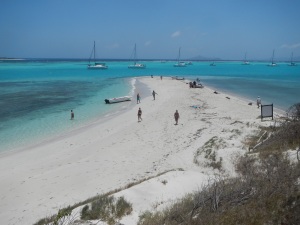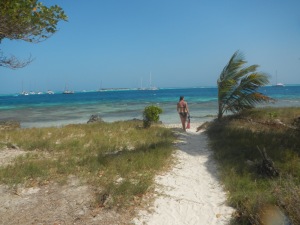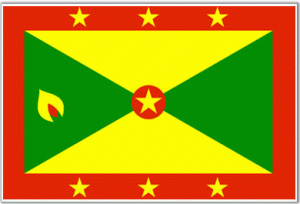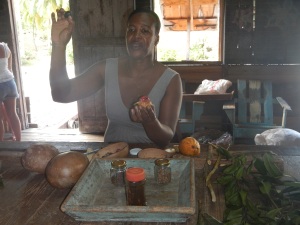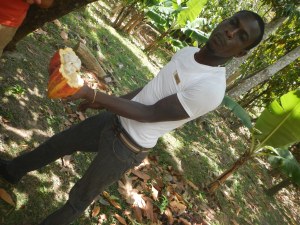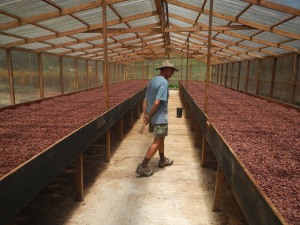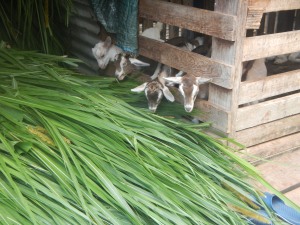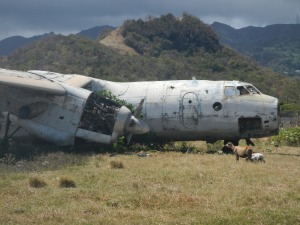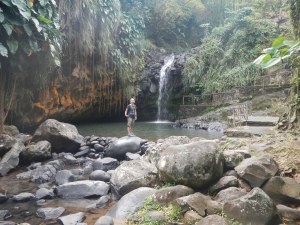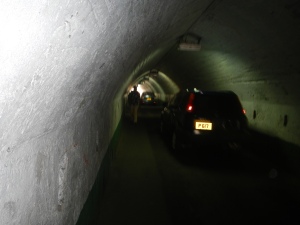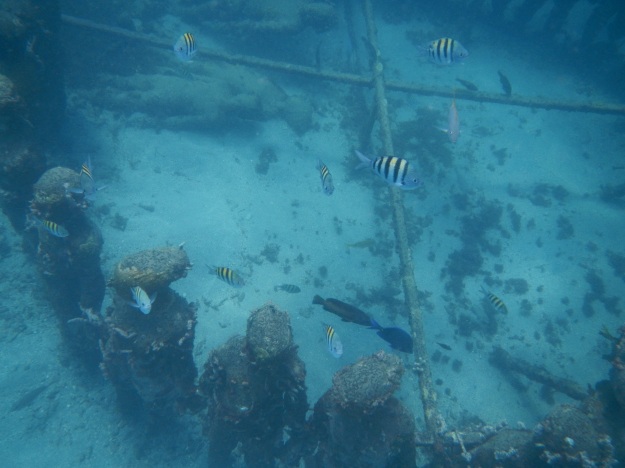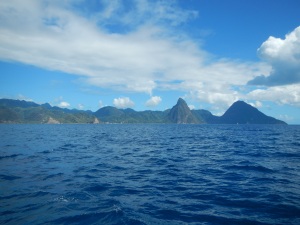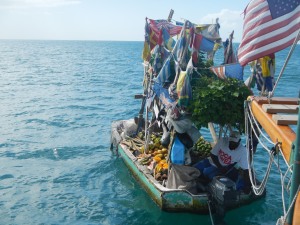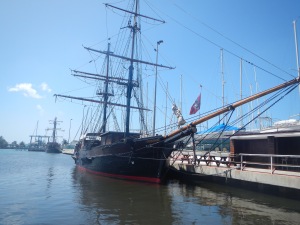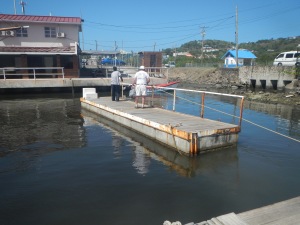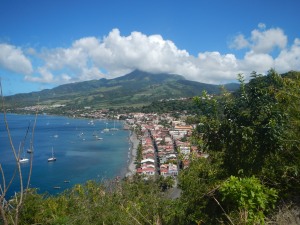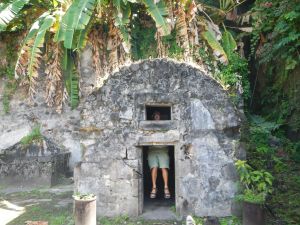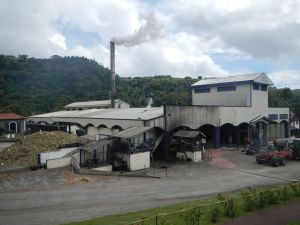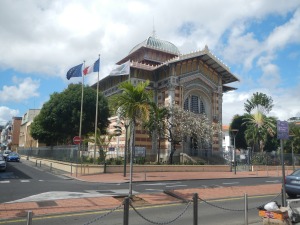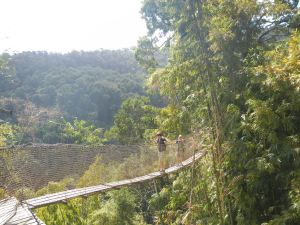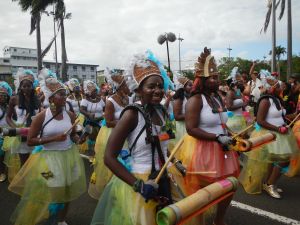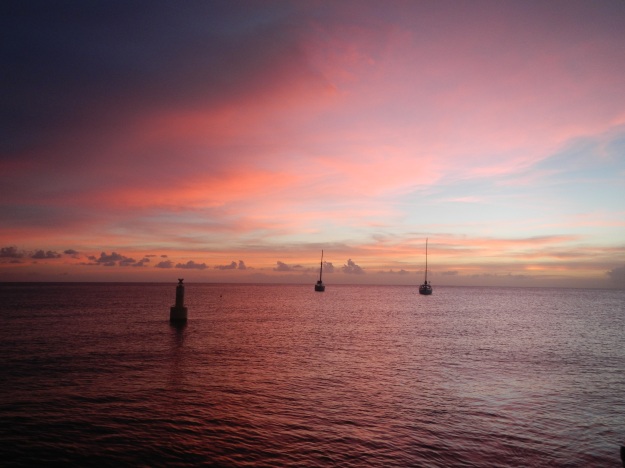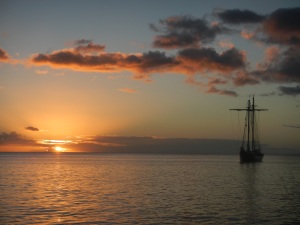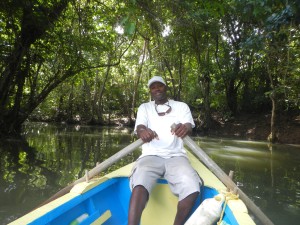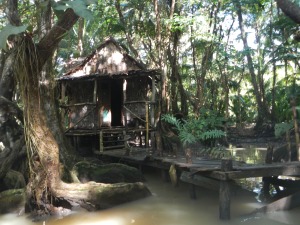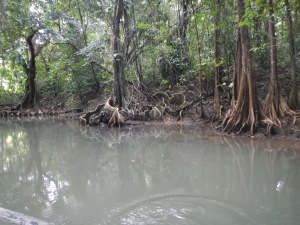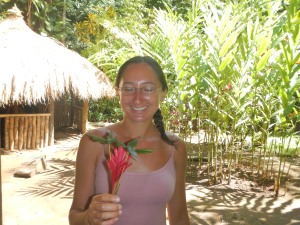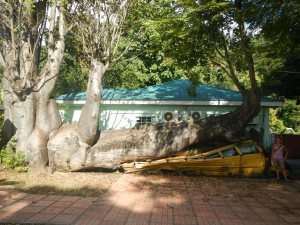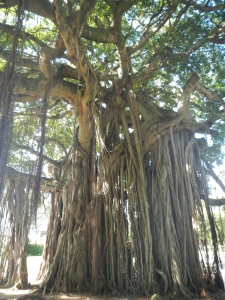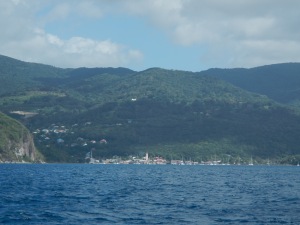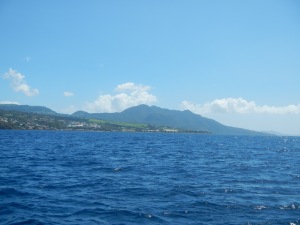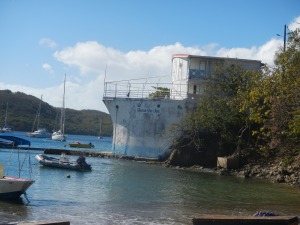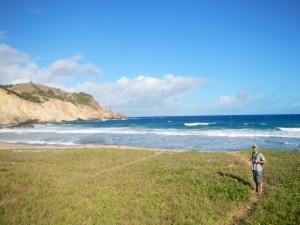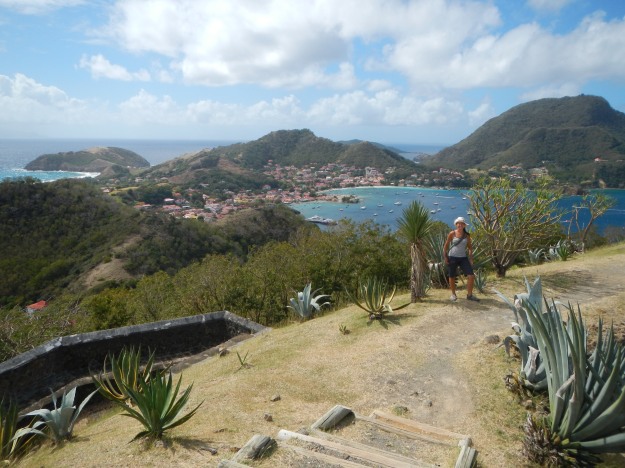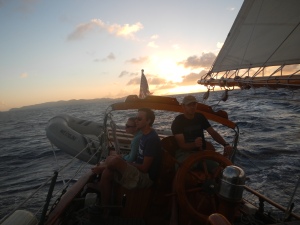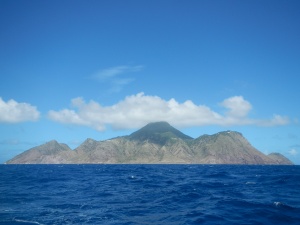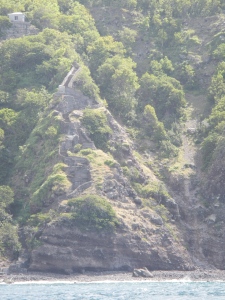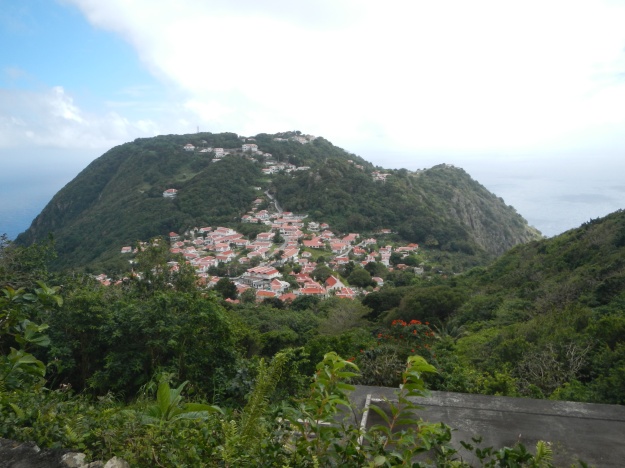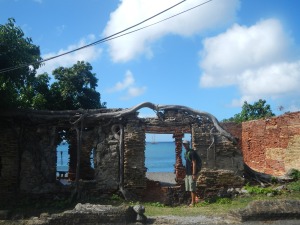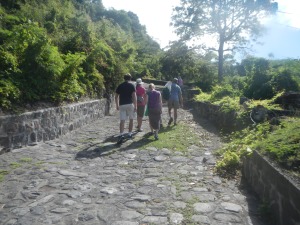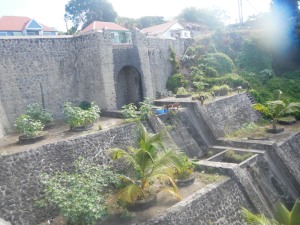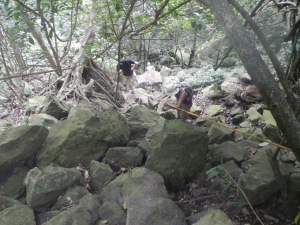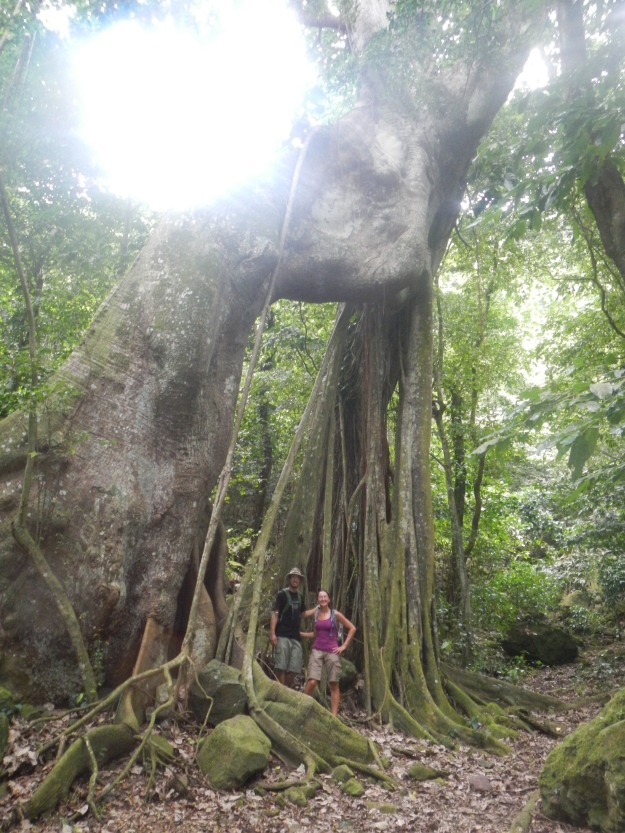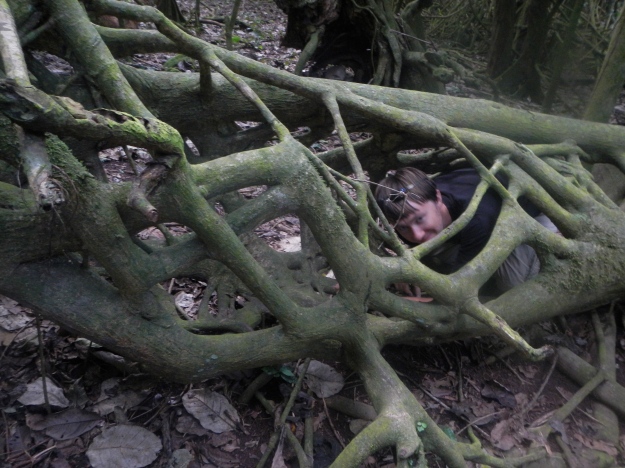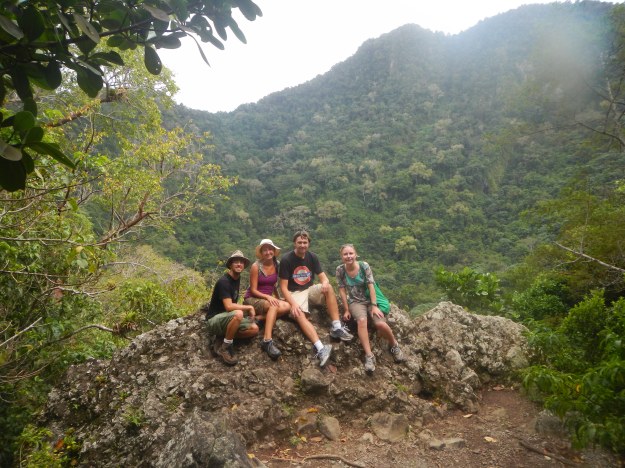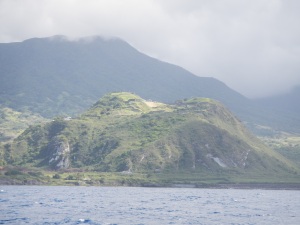
Sailing past Brimstone Hill
As you might expect, when you arrive in a new country you have to clear through customs and immigration. When you arrive by air, this is automatic, but when you arrive by sea, you must seek out customs and immigration, which can be in surprisingly hard to find locations. It has become tradition that my dad and I always go to clear customs together. In a boat, it is only mandatory for the captain to go and declare the other passengers, that is why not everyone needs to go in. It is interesting and often telling of the entire island how their customs procedure is set up. In St. Kitts, we got to listen to the customs lady singing along to “Make time for Jesus” and see immigration officials aggressively playing candy crush on their smartphones.
As we exited customs, we were met by a friendly yet aggressive tour guide named Veronica wanting to sell us a tour of the island. It was late in the day, so we said we’d think about it, but really we’d just intended to pass. But when we arrived on shore with the whole crew, she was waiting for us at the dock, and began dropping her price, eventually telling us to just get in her van and pay at the end only if we liked the tour. She was fiercely proud of her island home and wanted to show it off to anyone willing to come along. How could we refuse?
So we all piled into her lovely air-conditioned van and off we went. Veronica was extremely knowledgeable about the history of St. Kitts, and pointed out the house and grave of the first governor, as well as the site of the Carib Indian massacre now known as bloody point. Legend has it that so many natives were killed that the river ran red with blood for days.
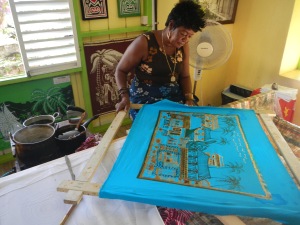
An batik artist giving a demo
Our first stop was Romney Manor, originally owned and built by Thomas Jefferson’s great-grandfather, Samuel Jefferson. It is now the site of a well known batik factory, where we got to watch the waxing and dying process of making batik fabric art. We had come to this same place twelve years ago, and I had purchased some lovely pillow covers that had since turned to ribbons from overuse, and I was anxious to replace them. Outside the batik shop, we walked around their lovely manicured gardens and saw monkeys playing about in the branches above us.
But soon we were off to our next destination—Brimstone Hill Fort. We had also visited this location on our first trip, but this time around, it was a much more pleasant experience. The first time, we had not taken a taxi, but a local bus and hiked up the considerable hill to the fort in the searing midday sun. Also, I remembered the distinctive suffocating sulfurous stench for which the fort is named.
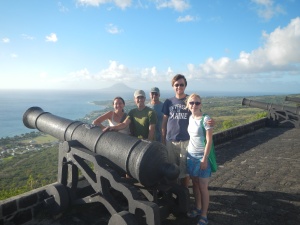
Enjoying the view from Brimstone Hill Fort
Thankfully, this time it was a pleasant temperature for late afternoon, and the smell of brimstone was noticeably absent. Since it was near closing time we practically had the place to ourselves as we wandered about the huge complex and enjoyed the spectacular views of the sea and villages below. Brimstone Hill is sometimes called the Gibraltar of the Caribbean, and for good reason. It is a massive fort overtaking a large hill, which is actually a sulfur vent of the larger volcano.
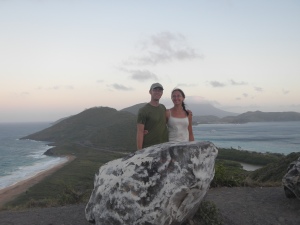
The thin isthmus on southern St. Kitts. The Atlantic is on the left, the Caribbean on the right.
Then we were off to the opposite end of the island—a favorite spot of Veronica’s—where you could see the Caribbean sea and Atlantic ocean separated by a thin strip of land. We passed through poor shanty towns with brightly colored yet crumbling clapboard or concrete structures. But what they lacked in financial resources they made up in natural ones. Just about every house had papaya, mango, and breadfruit trees in their yard. The far side of the island was a whole other world with McMansions and all-inclusive resorts. It was beautiful but soul-less. As we returned to the dinghy dock, we thanked Veronica, #1 tour guide in the Caribbean, for her knowledge and hospitality, and before long it was time to be moving on.
In fact, we were incredibly anxious to move on from St. Kitts because of the terrible anchorage. It never stopped rolling the entire time we were there. The constant side-to-side motion made everyday actions incredibly difficult, especially eating dinner off of our gimbaled table. However, it was somewhat pleasant for sleeping. I’ve come to enjoy the rocking motion of the boat as I drift off to sleep.
On our sail from St. Kitts to Montserrat was pleasantly uneventful. We had the privilege of sailing past the famous Kingdom of Redonda and seeing its fabled shores.
Montserrat was one of the few islands we didn’t visit back in 2002, as it was actively erupting at the time. We had watched steaming boulders rolling down the mountains as we sailed past. Now, things had calmed down enough that we had decided to stop here.
And our visit was immediately off to an exciting start. Just as soon as Dad and I were heading back to Koukla after clearing customs, a man at the dock pointed to a small sloop and asked if it was our boat, as it was drifting out to sea.
We have two outboard motors, a 25 and a 2.5 hp as backup. Since the little one hadn’t been used in a while, we had put it on for a change to let it run for a bit to keep it in good working condition… it seems like we had picked the wrong day for it. We raced back to Koukla as fast as we could (very slowly at 2.5 hp), but when we were almost back, our little outboard motor died. Dad started to paddle while I kept pulling the motor’s start cord over and over. Eventually it restarted, we got back and switched to the 25 horsepower motor in record time (this involves hoisting the heavy thing over the side and onto the dingy using our anchor burton), and Scott, Dad, and I went off after the boat.
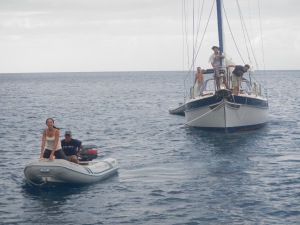
We pull the boat in from being adrift at sea, while one of the other guys strikes a jaunty pose
Another neighboring boat had also gone over to help, so the three of us plus the two of them worked on a plan. Scott and I, along with one of the guys hauled up the anchor by hand, while Dad and the other guy tried to get the motor started. It was no use, their engine appeared to be dead. Thankfully, we had our 25 hp outboard motor now in place, so we pushed the boat back in. Scott was at the helm, dad was driving the inflatable, while I held it in place next to the sloop.
We weren’t sure how to re-anchor the thing, so we tied it off Koukla’s stern, and said our goodbyes and thankyous to the other guys, while we rushed back ashore to notify the authorities in hopes of finding the owner.
We gave the name of the boat to the customs official, just before they were about to leave for the day, and miraculously they managed to get a hold of the owner. He came over soon after, and expressed his deep gratitude.
Our second day on Montserrat was almost as dramatic as our first. We took a taxi tour of the island, specifically to see the volcano and its destruction. First we went to the volcano observatory, and watched a short film on the history of the volcano and its recent eruptions. On a clear day you could see the peak of the volcano from the observatory. It was not a clear day.
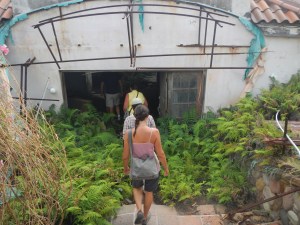
Into the ruins
Before we went into the exclusion zone, the area of the island that has been surrendered to the volcano and deemed uninhabitable, we had to check in with the police station and sign in our names and nationalities into a big leatherbound book—should anything happen.
It was a bit unnerving being in the shadow of an active volcano, but even with all the recent eruptions, only 90 people had died over the past several decades, and nearly all due to their own ignorance and negligence, not heeding scientists’ warnings.
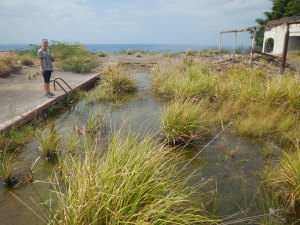
The swimming pool has become a frog pond
The devastation was spectacular. The grey ash covered hills stood out in deep contrast to the lush green vegetation. We walked through a formerly posh resort, now piled thick with ash. The swimming pool, half filled in, was now home to aquatic plants and numerous tadpoles. We were allowed to roam freely in the post-apocalyptic setting, into hotel rooms, lobbies, backrooms, and so forth, now wrecked and filled with ash and mud. Melted shower curtains still hung from their rings. In other areas, houses were filled with ash up to their roofs. We were able to peer into second story windows.
On our way back, we stopped at Runaway Ghaut, a fresh mountain stream with mystical properties. Next to the stream it says, “if you drink from this burn to Montserrat you will return.” So apparently we will all be back someday.
